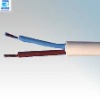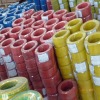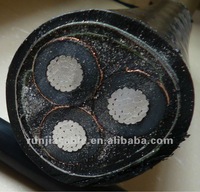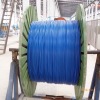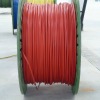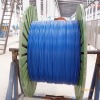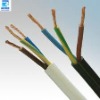- Power Cables[10]
- Electrical Wires[10]
- Instrumentation Cables[6]
- Other Wires[3]
- Control Cables[7]
- Temperature Instruments[10]
- Pressure Gauges[7]
- Pressure Transmitters[7]
- Contact Person : Mr. Zhu Yuansong
- Company Name : Anhui Runjia Cable Group Co., Ltd.
- Tel : 0086-566-2416333,18256662237
- Fax : 0086-566-2081498
- Address : Anhui,chizhou,runjia science&technology industrial park,ecological avenue,chizhou hi-tech industrial development zone,chizhou,anhui,china
- Country/Region : China
- Zip : 247000
0.6/1KV PVC Insulated LSZH Wire
Halogens are non-metallic elements found in the periodic table. The five halogens are fluorine, chlorine, bromine, iodine, & astatine.
Why consider halogen-free cable?Over the last few years, halogen-free wire and cabling products have seen an increase in popularity. Halogen-free cables are used in consideration of issues including fire safety, fire damage prevention, and the environment. Halogen-free cables help eliminate the use of environmentally sensitive materials.
In what applications can halogen-free cable be used?Halogen-free cable is intended for use in applications in which insulation with low toxicity, low smoke generation, and low corrosiveness is needed.
Does the NEC allow halogen-free cable in all applications?The NEC (National Electrical Code) doesn't prohibit halogen-free cable or wire installation in any application.
What does LSZH mean?LSZH stands for low smoke zero halogen. This means that the cable emits little to no toxic halogens and minimal smoke when in contact with fire. These are important safety precautions and they often appear together in wire and cable specifications. LSZH wire and cable is also called: low smoke and fume (LSF), low smoke halogen free (LSHF), and low smoke zero (0) halogen (LS0H).
Are there any disadvantages to using low smoke zero halogen cables?Low smoke zero halogen cables provide a lot of great safety advantages, but there is a bit of an electrical and mechanical trade-off. In order to be low smoke zero halogen, the cable jacket must incorporate a high percentage of filler material. This increase in filler material could make the jacket less chemical and water resistant and could provide poorer mechanical and electrical properties than a non-LSZH counterpart. LSZH jackets are also more likely to experience jacket cracking during installation, so special lubricants may be necessary to avoid damage. As a result, LSZH cable is commonly chosen for applications where fire safety is more of a concern than the cable’s specific electrical and mechanical properties.
HelpPVC Insulated Flexible Wire/Cable specification |
Type | Name |
BV | Copper conductor PVC insulated wire |
BLV | Aluminium conductor PVC insulated wire |
BVR | Copper conductor PVC insulated flexible cable |
BVV | Copper conductor PVC insulated and sheathed round cable |
BLVV | Aluminium conductor PVC insulated and sheathed round cable |
BVVB | Copper conductor PVC insulated and sheathed flat cable |
BLVVB | Aluminium conductor PVC insulated and sheathed flat cable |
RVS | Copper conductor PVC insulated twisted flexible cord for connection |
RVP | Copper conductor PVC insulated screened flexible cord |
RVP-90 | Copper conductor PVC insulated screened flexible cord for a conductor temperature of 90°C |
RVVP | Copper conductor PVC insulated and sheathed screened flexible cable |
0.6/1KV PVC Insulated LSZH Wire

